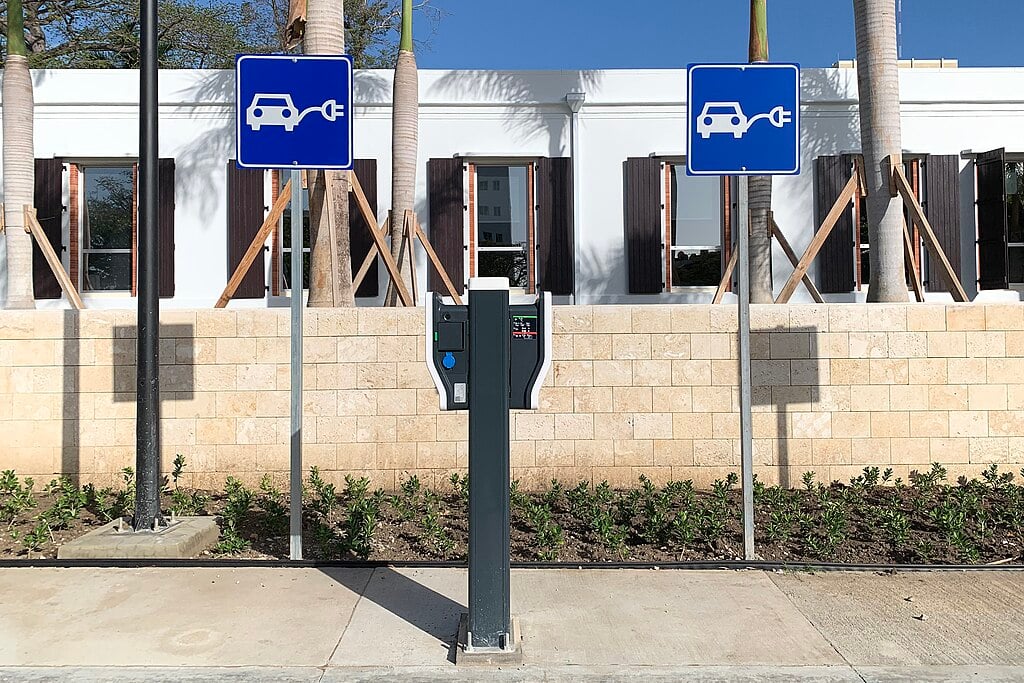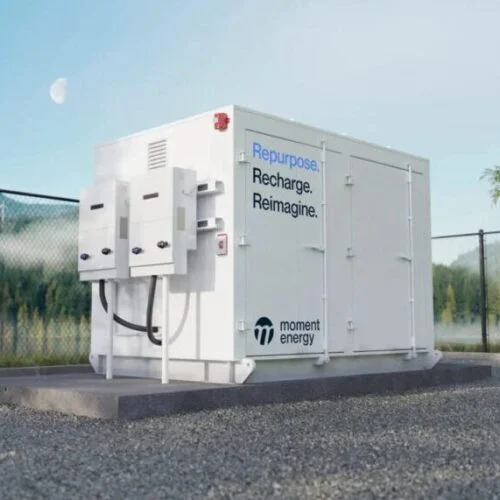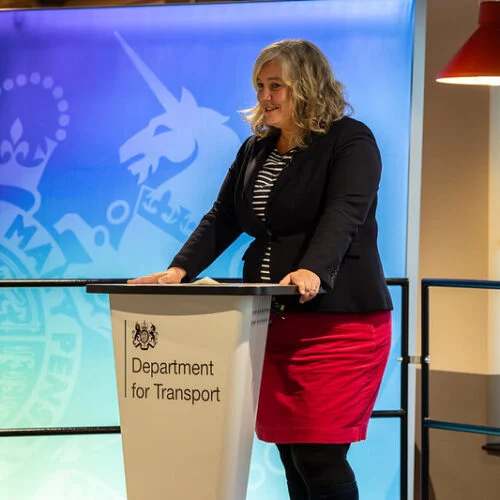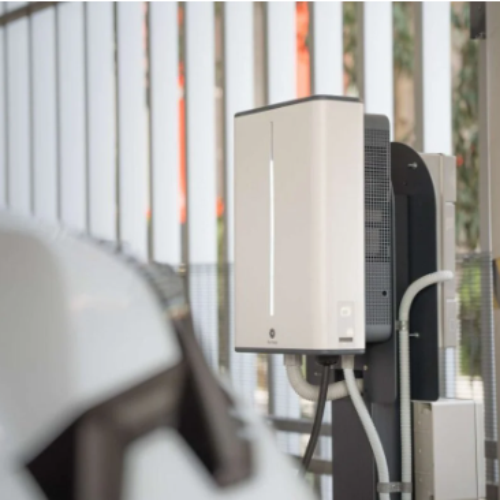The UK Office for Zero Emissions Vehicles (OZEV) has announced £63 million of government spending allocated to EV infrastructure, as an announcement due later this week is rumoured to confirm EV subsidies.
Local authorities will receive a collective £25 million to fund installation of at-home charging for those without driveways: the installation of gullies through which cables can be run from the house without creating a trip hazard on walkways.
NHS England will receive £8 million funding towards the electrification of ambulances and medical fleets across 62 NHS Trusts and around 224 sites, which NHS chief sustainability officer Chris Gormley said will save hospitals “millions on fuel and maintenance costs”.
The government is also launching a grant scheme for workplace and depot EV charging, particularly for electrified HGV, van and coach fleets.
It has also committed to modernising EV charging signage along major roads in the UK, which will see signposting to large EV charging hubs along A-roads for the first time. Ian Johnston, COE of chargepoint operator (CPO) Osprey, said this is a “welcome first step”, as the company pointed out that the news signals the existing requirement for charging to be co-located with petrol or diesel pumps to qualify for signage will be removed.
Johnston explained: “Signage impacts all the UK’s drivers because consumers need to see it to believe it.”
Edmund King, president of roadside assistance and car insurance company the AA, added: “There are more public chargers than people realise, but they are often hidden in plain sight. Increasing signs for the public network is vital to help the EV transition, as it will create confidence for drivers both now and in the future.”
A major talking point within the EV infrastructure industry has, for some time, been the disparity between public perception and the reality of the number of EV chargepoints available. Range anxiety and the belief that there is an insufficient public charging network have been consumers’ reasoning behind not making the switch to an EV.
CEO of the UK’s largest EV charging network InstaVolt, Delvin Lane, said that public EV infrastructure in the UK is “already largely in place”, welcoming the new signage as something that will “finally showcase it to drivers in a visible, accessible way”.
Onstreet EV charging
Another barrier to uptake is cost. While the price of electricity is far lower than that of petrol or diesel, the cheapest electricity tariffs are available at home; the public charging network is notoriously more expensive, in part due to the so-called ‘pavement tax’.
The current system charges VAT at 5% for domestic energy and at 20% for energy on public charging.
For those without a driveway, accessing home tariffs is not an option. While there have been sustained calls for the government to review the VAT charging on public chargepoints, this weekend’s announcement instead puts funding toward enabling onstreet EV charging fed by domestic power supply.
Transport secretary, Heidi Alexander, said: “We know access to charging is a barrier for people thinking of making the switch, so we are tackling that head on so that everyone – whether or not they have a driveway – can access the benefits of going electric.”
However, as Matthew Adams, head of transport and innovation at the Renewable Energy Association (REA), pointed out, giving local authorities the money to install cabling is just one part of the equation.
“The £63 million investment announced at the weekend is a step in the right direction. However, without unlocking the planning system, it will still take too long to get a cross-pavement solution like gullies in the ground,” Adams said. “We also note that there are other solutions available and would strongly urge Government to support other innovative solutions too”.
One such alternative is offered by start-up Nodum, which sees a lamppost-like structure affixed to a terraced home and the cable fed downwards, above the pavement, as needed.
Founder and managing director of Nodum, Ben Macdonald praised the attention for pavement gullies but noted “one of the beautiful things about powering our vehicles by electricity is the fact that electricity is ubiquitous and relatively easy to move with the right kit”.
Government to subsidise EV purchases
This is the first investment announcement since the government’s Spending Review (SR), which pledged £1.4 billion to encourage EV uptake, £400 million of which is for EV infrastructure to be installed along the major road network in the UK over next five years.
The SR also scrapped the Rapid Charging Fund, which had allocated £950 million to install chargepoints along the UK’s motorways—a fund that had sat unused.
Media reports over the weekend have suggested that the government will make available tax-payer funded subsidies to help consumers buy an EV to the value of about £700 million.
Were this implemented, it would be the first financial incentive to switch to an EV made available to motorists since the plug-in grant ended in 2022. Speaking to Laura Kuenssberg on Sunday, transport secretary Alexander emphasised an announcement is due later this week “on how we make it more affordable to people to buy an EV”, but declined to give further details.






